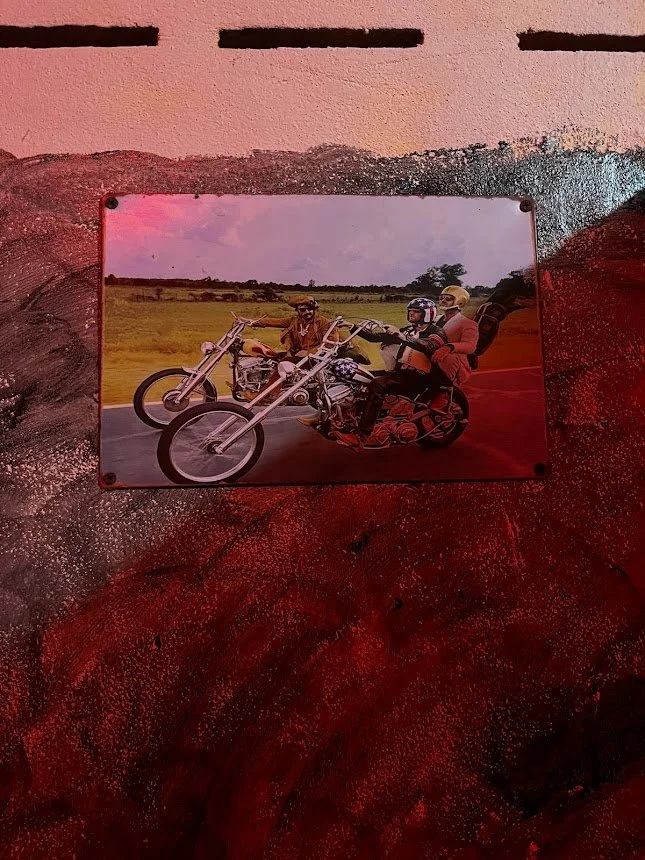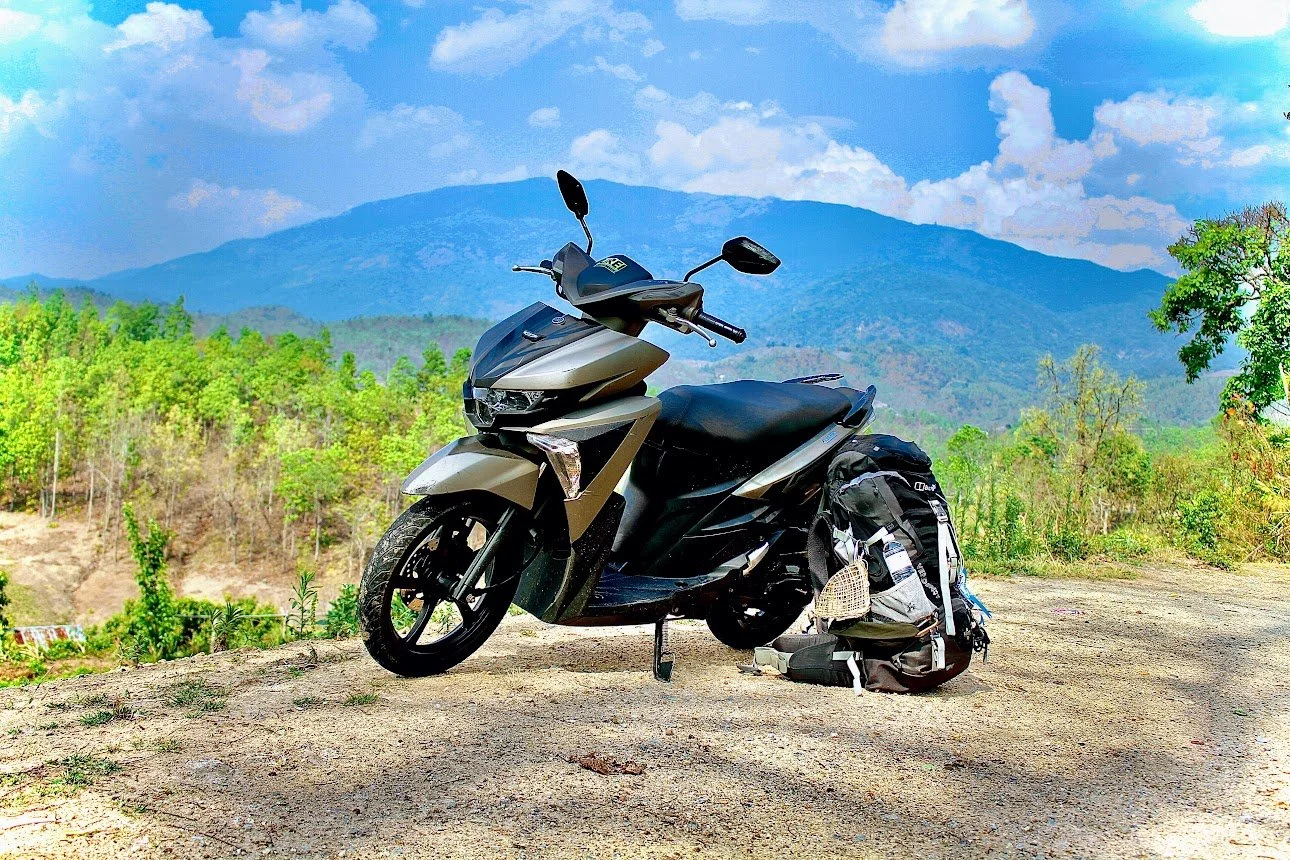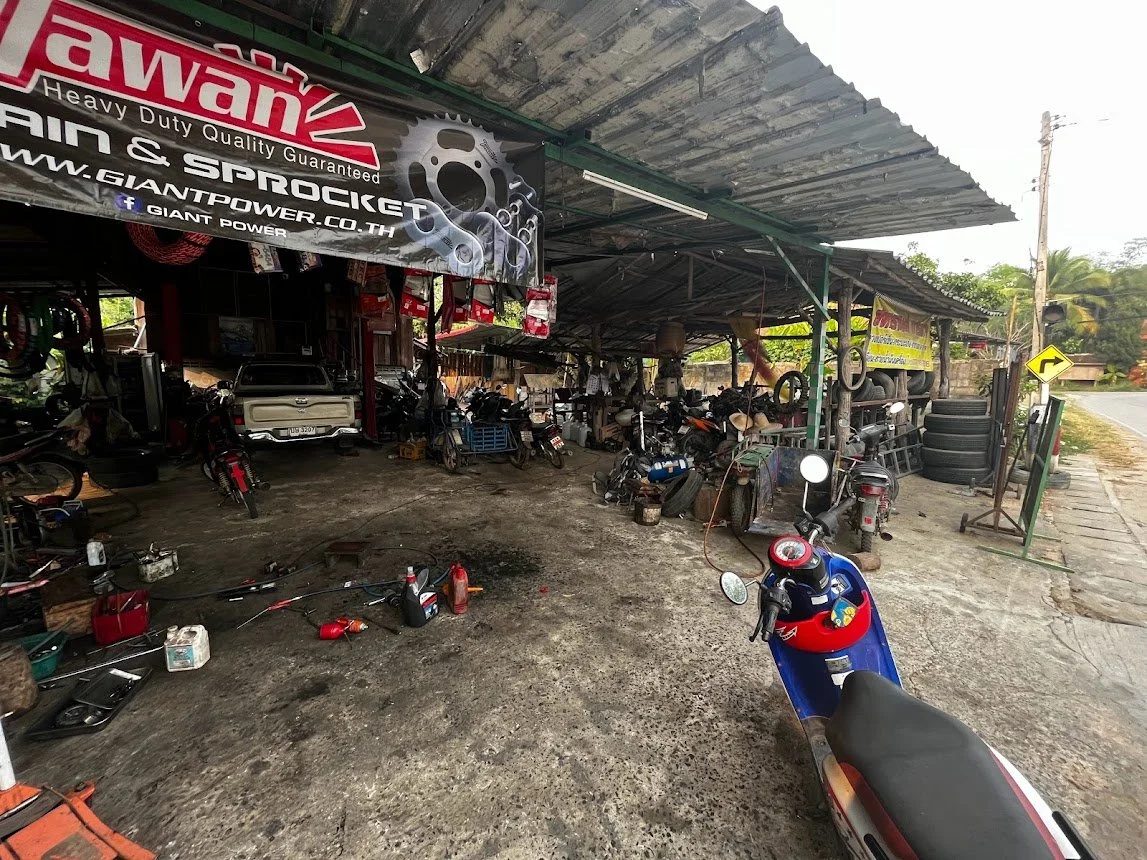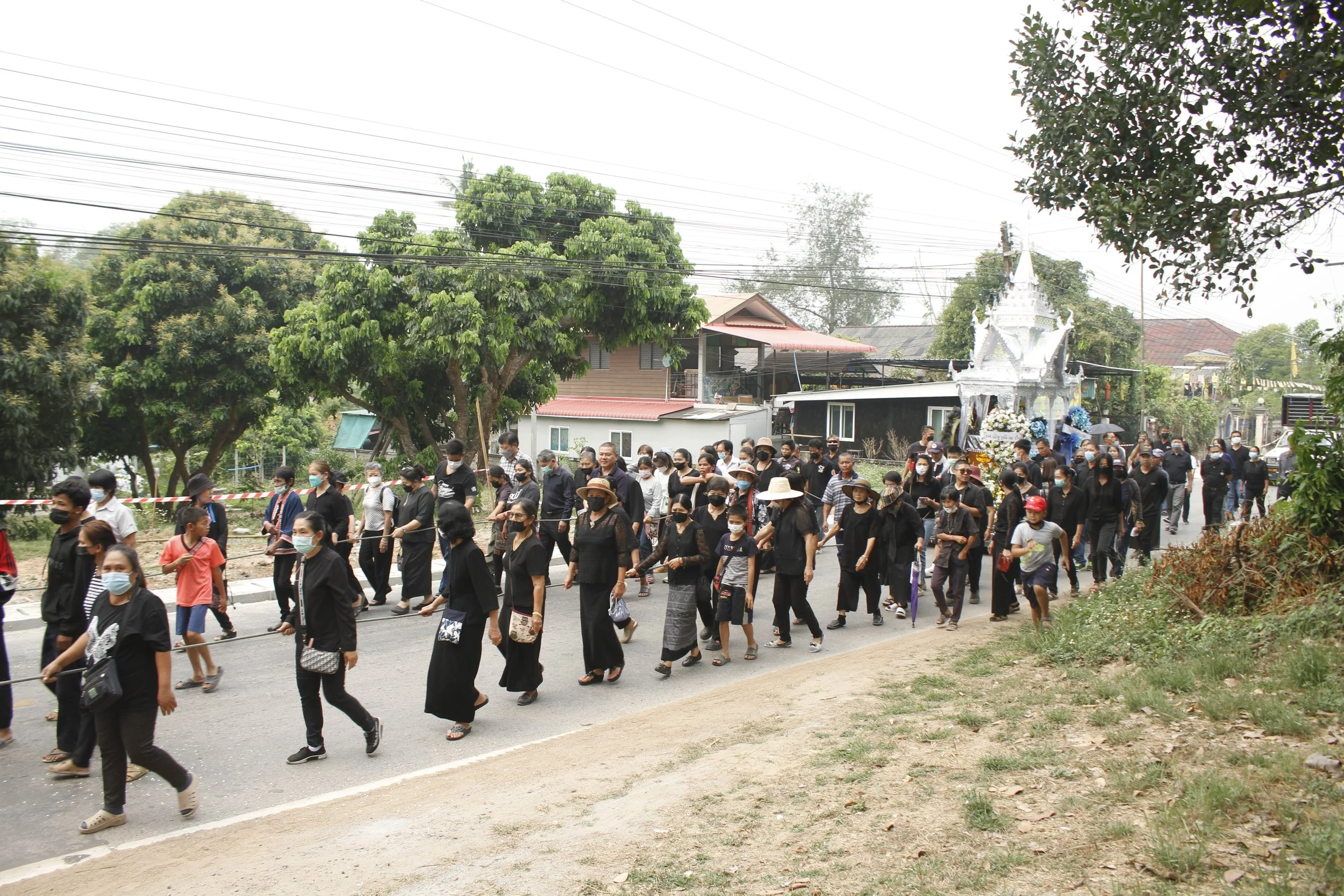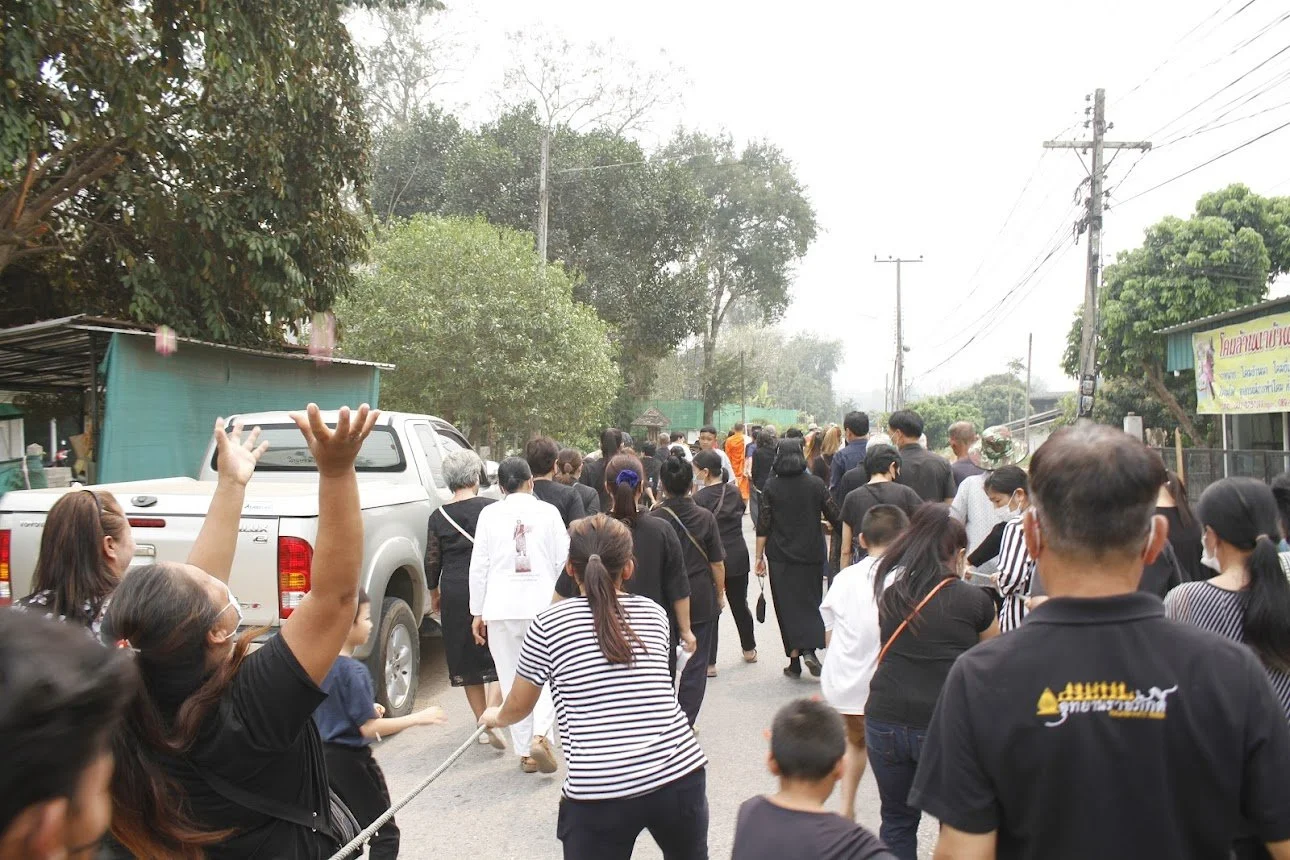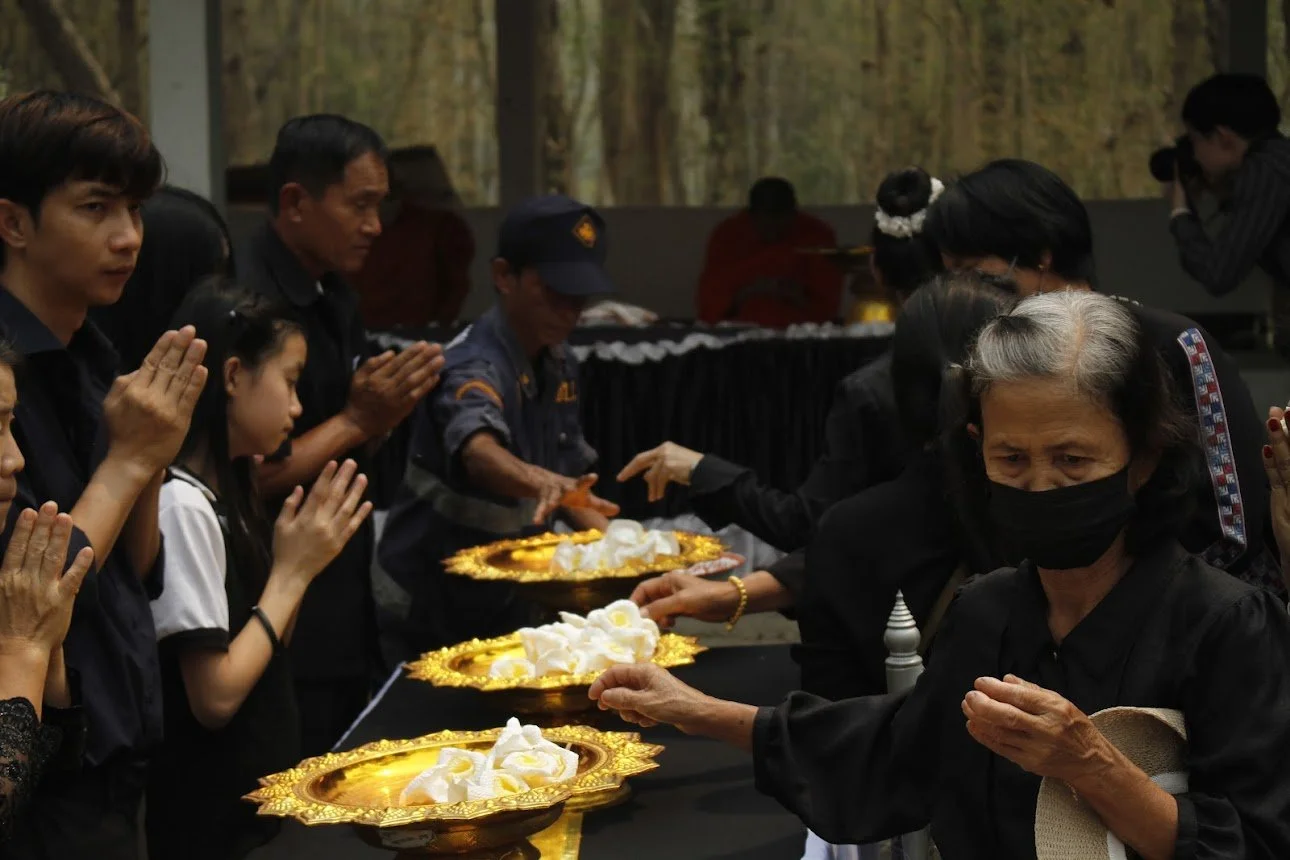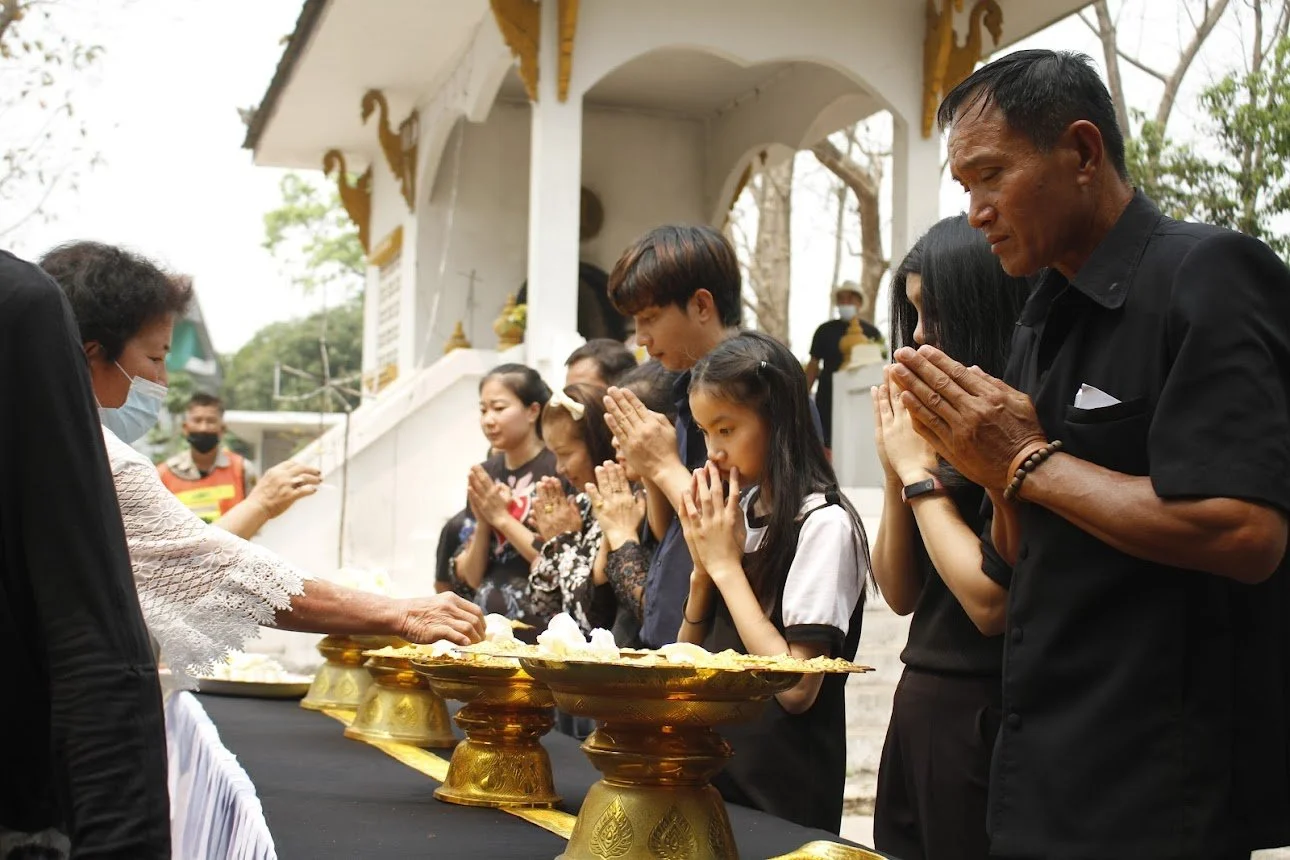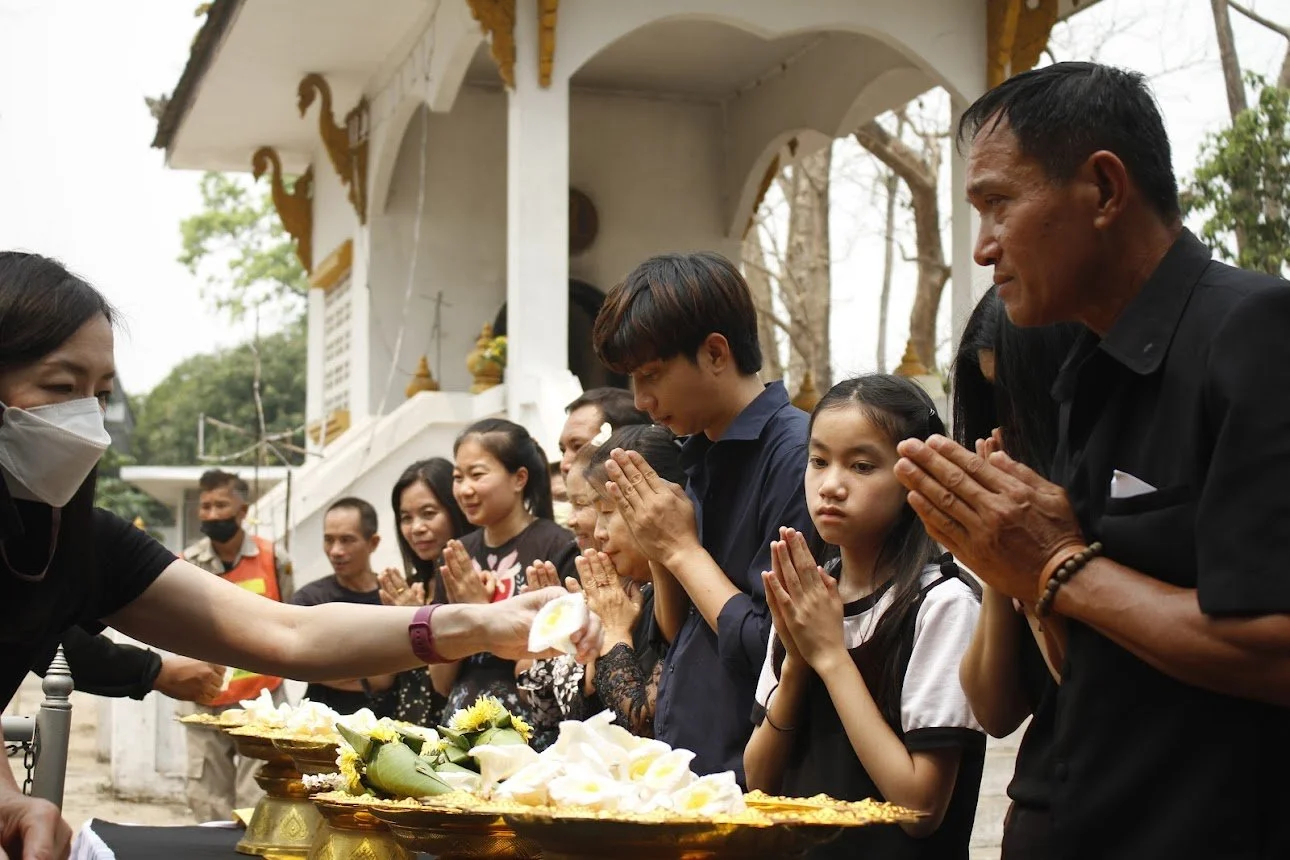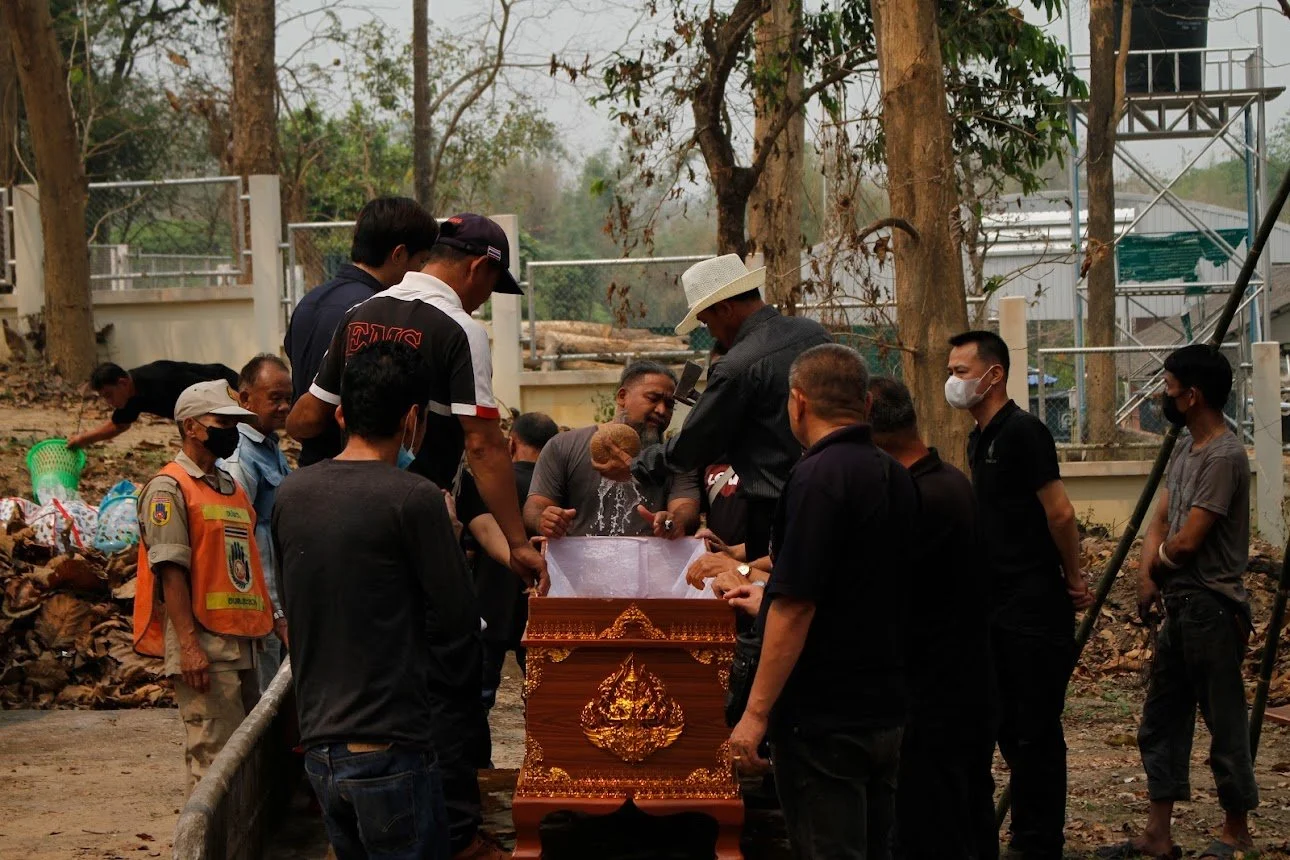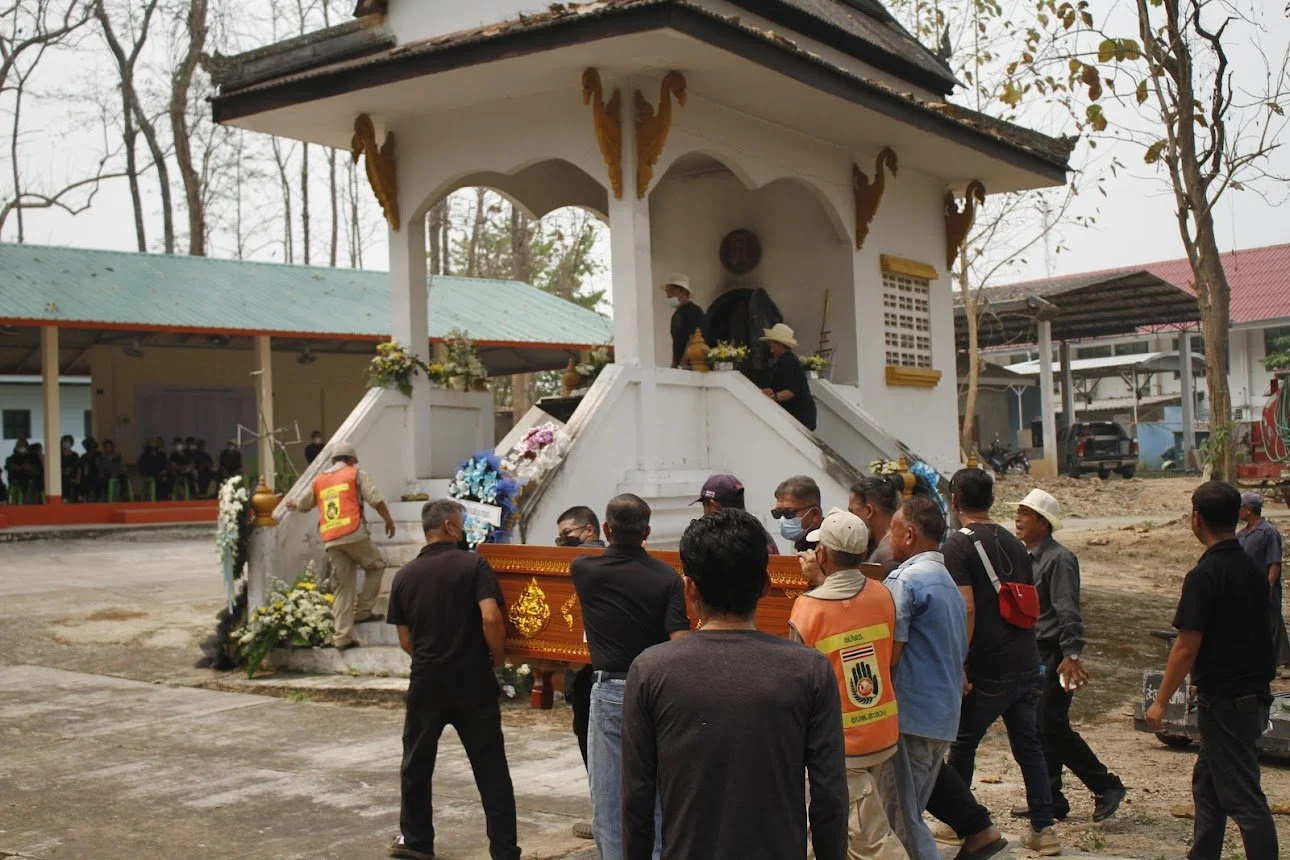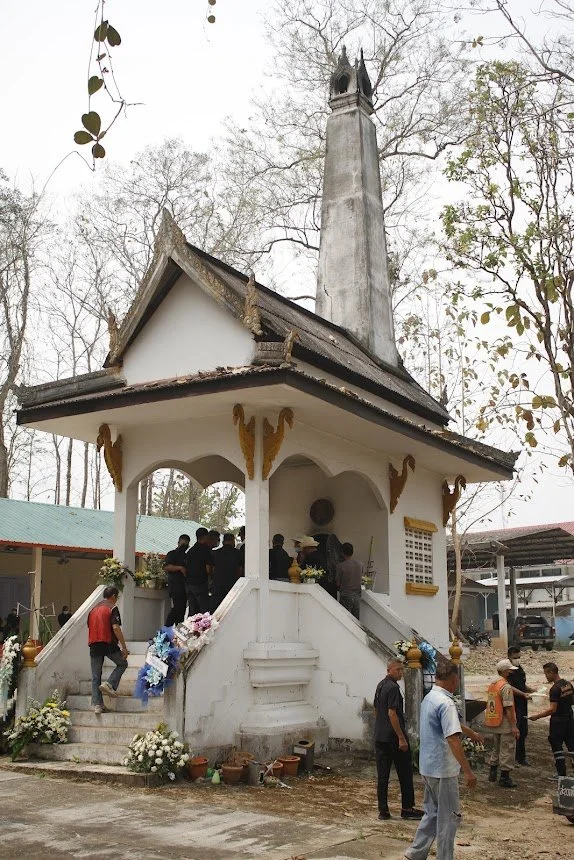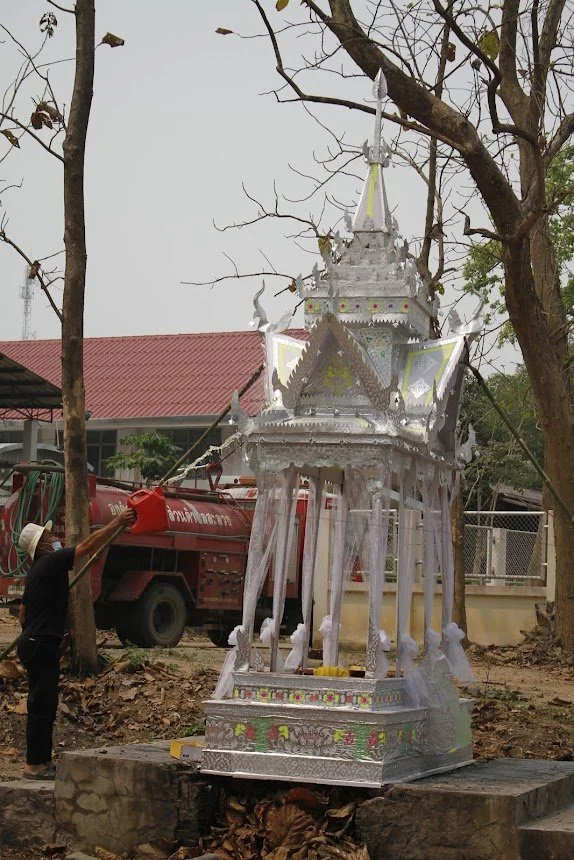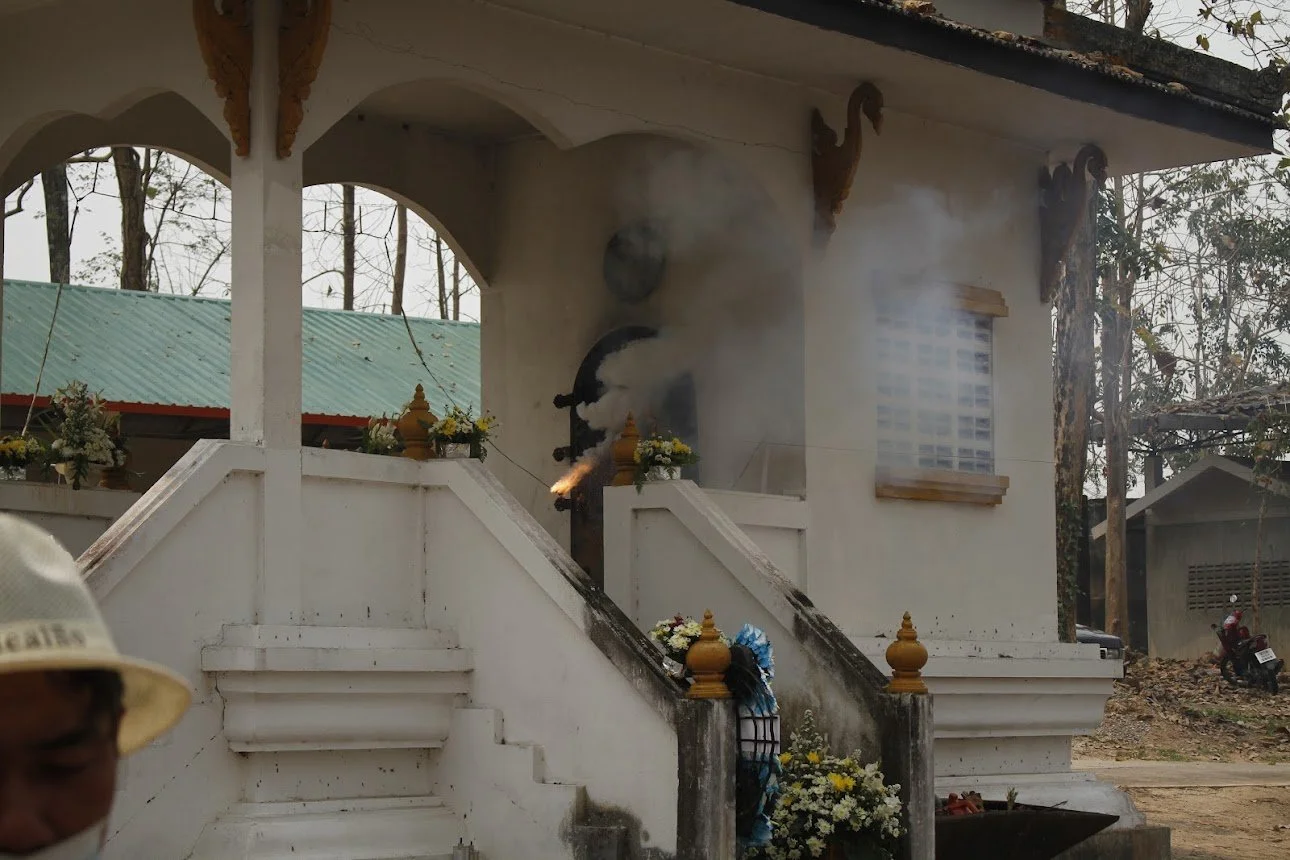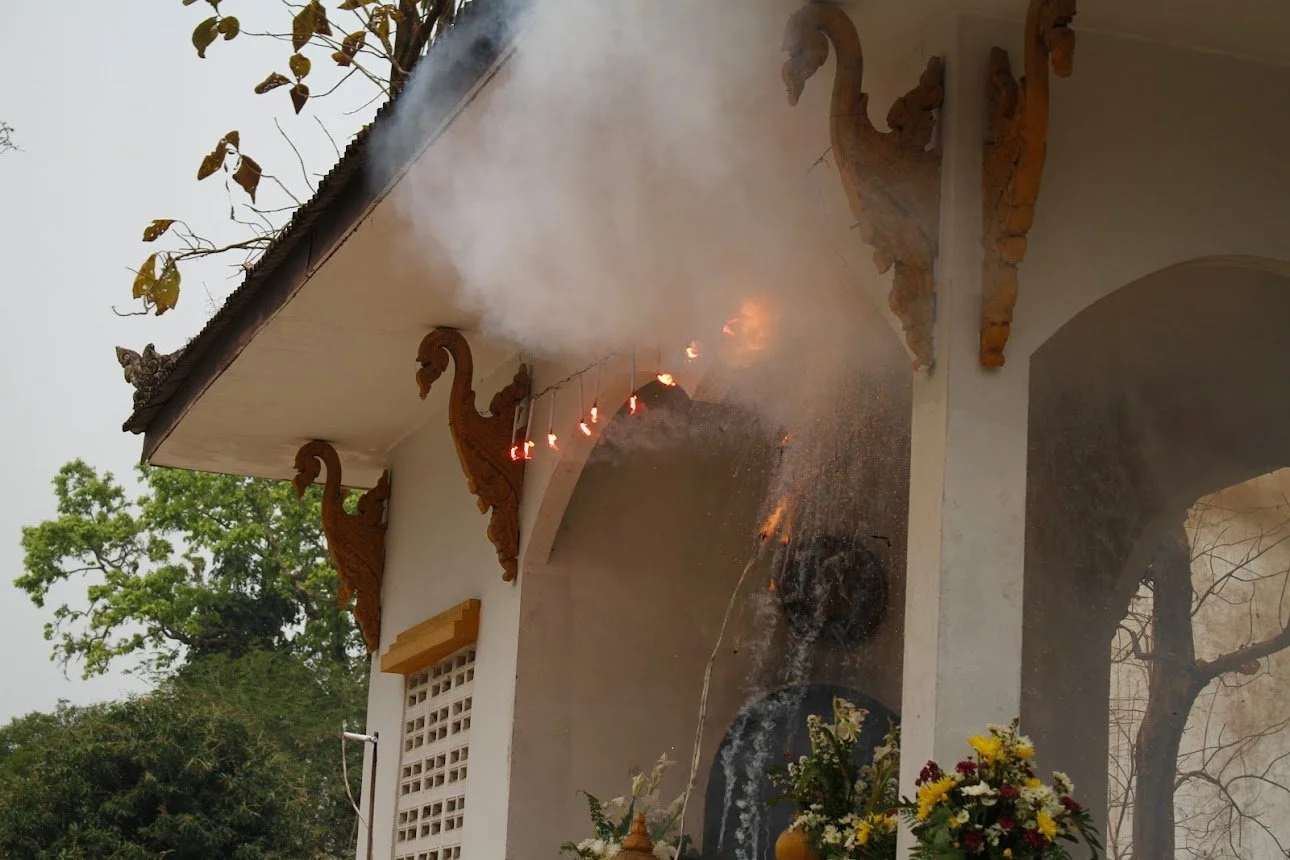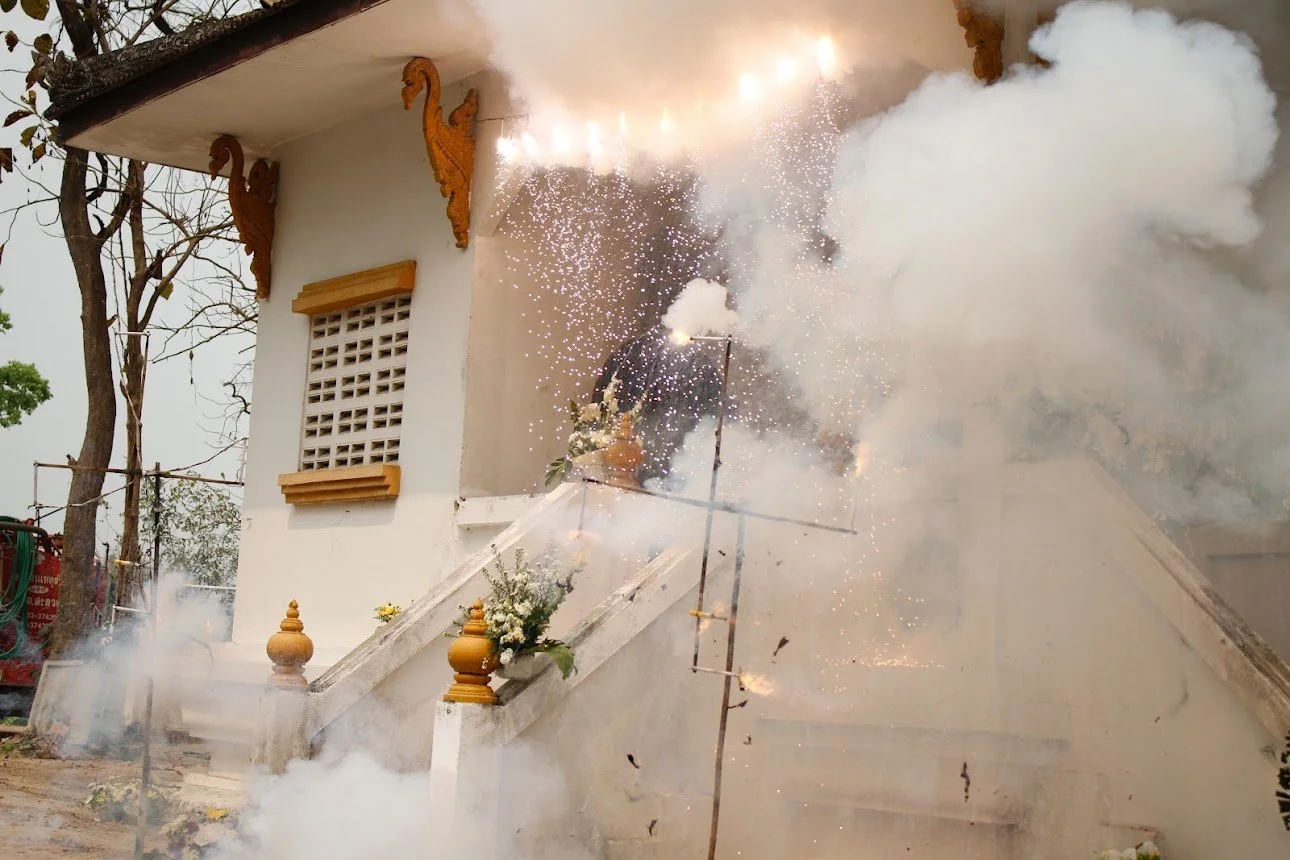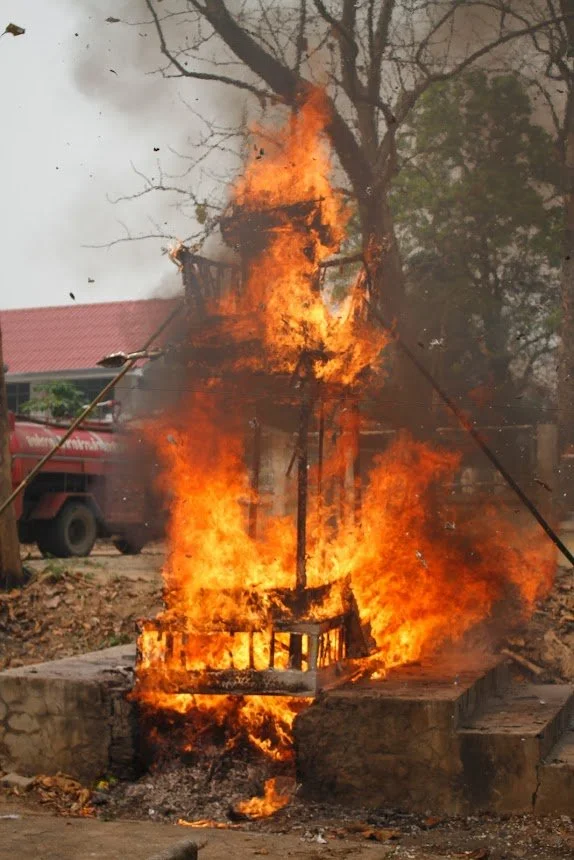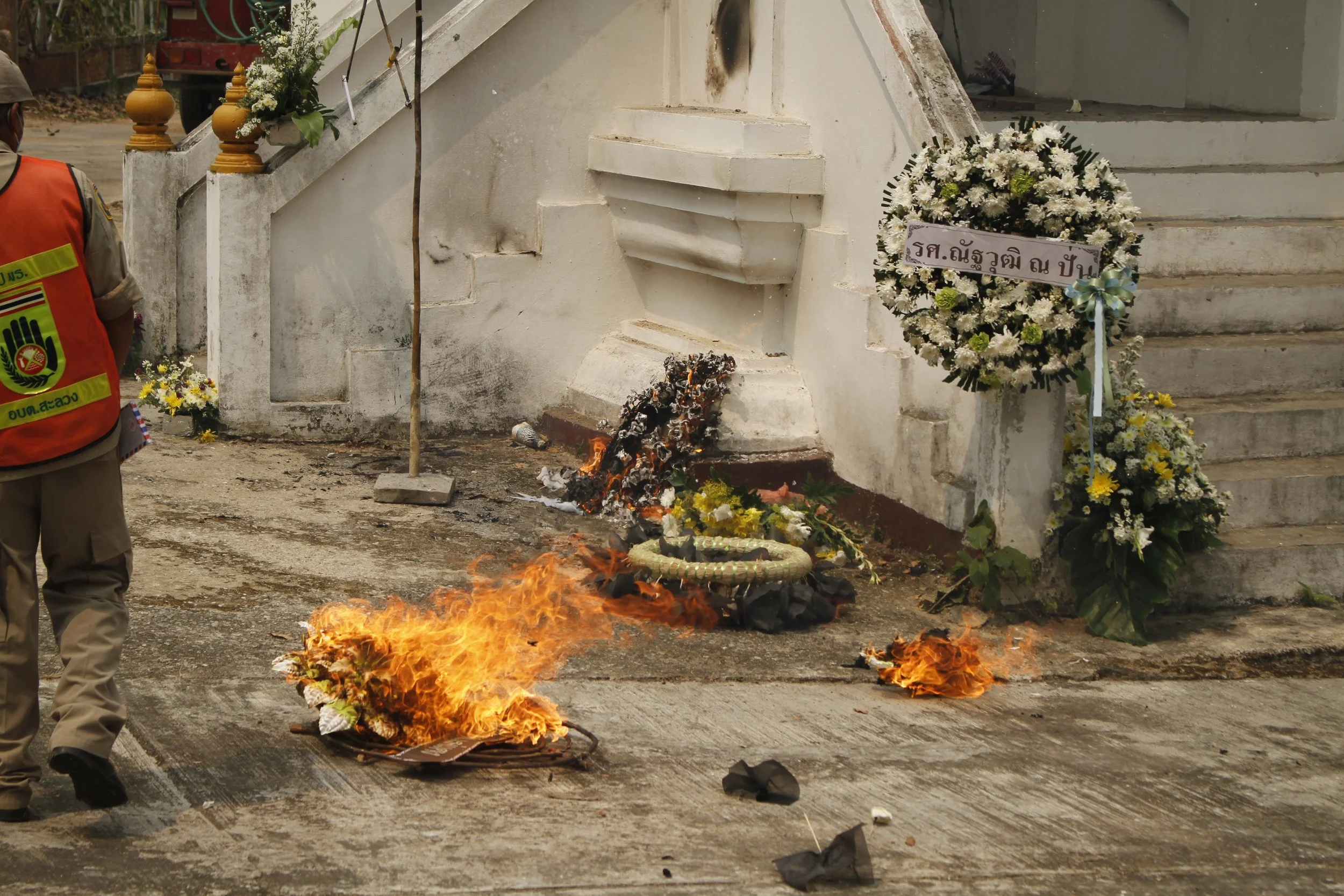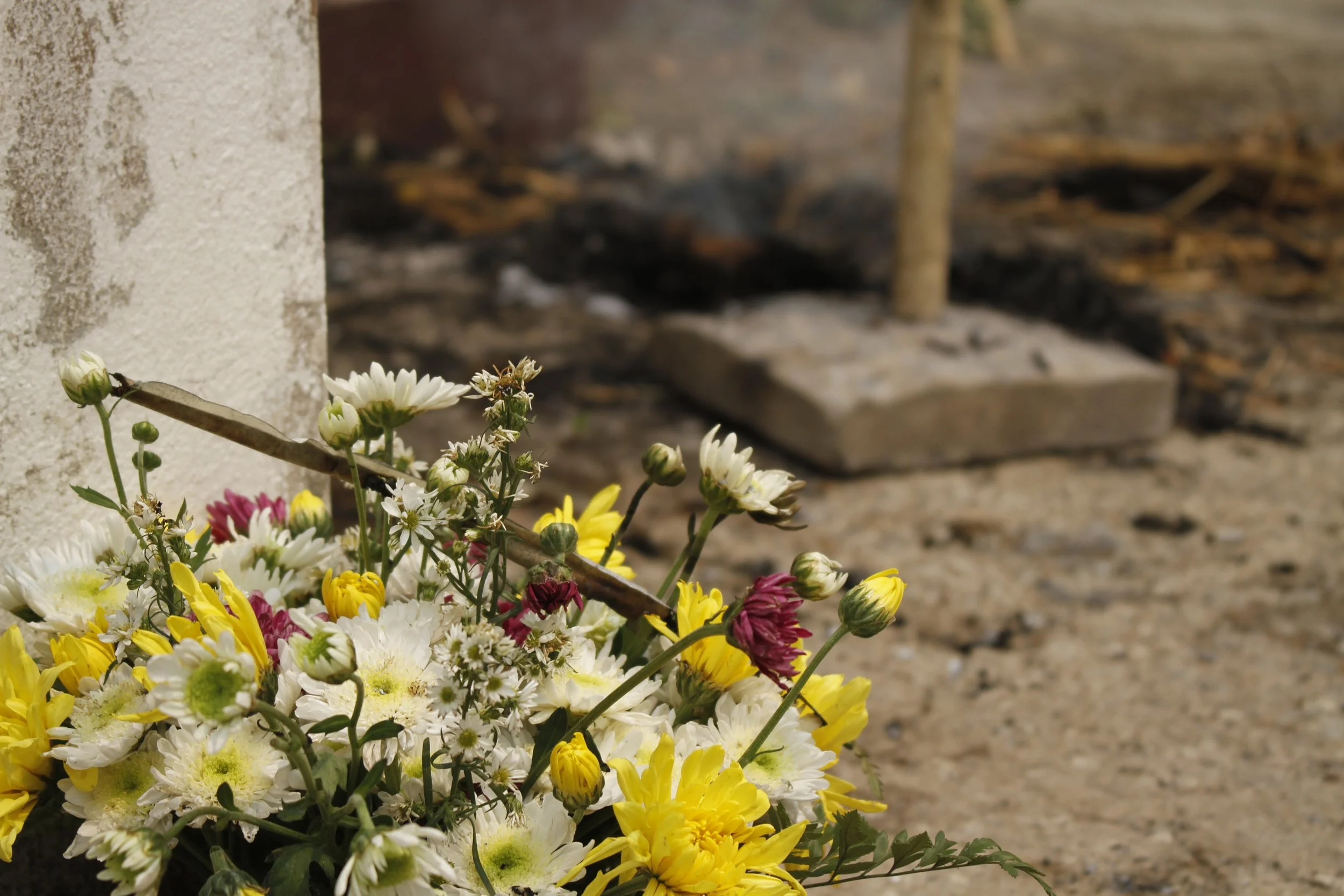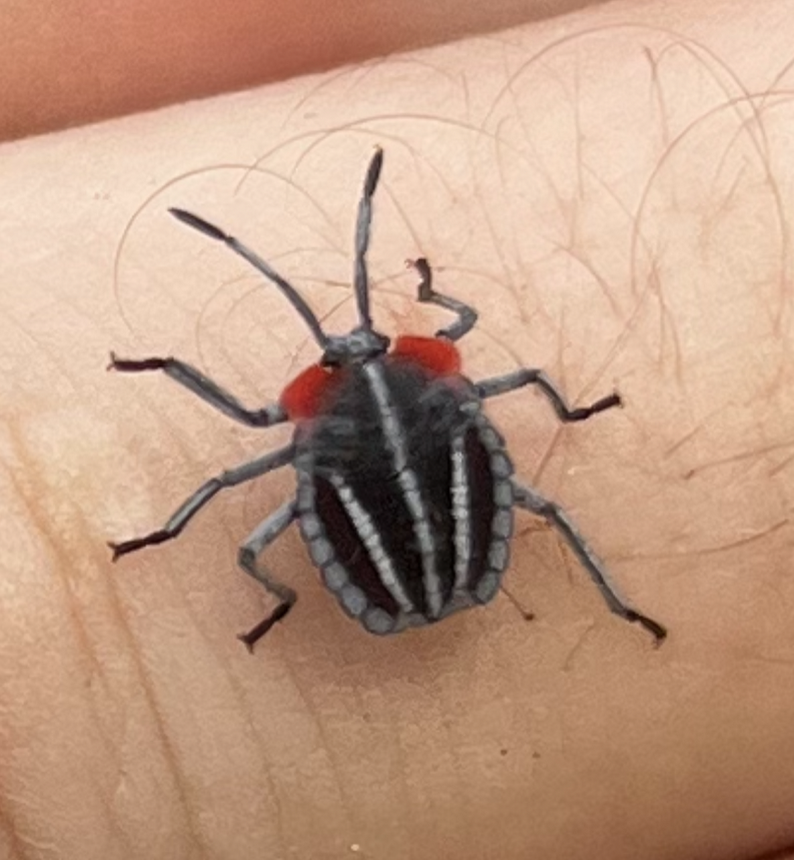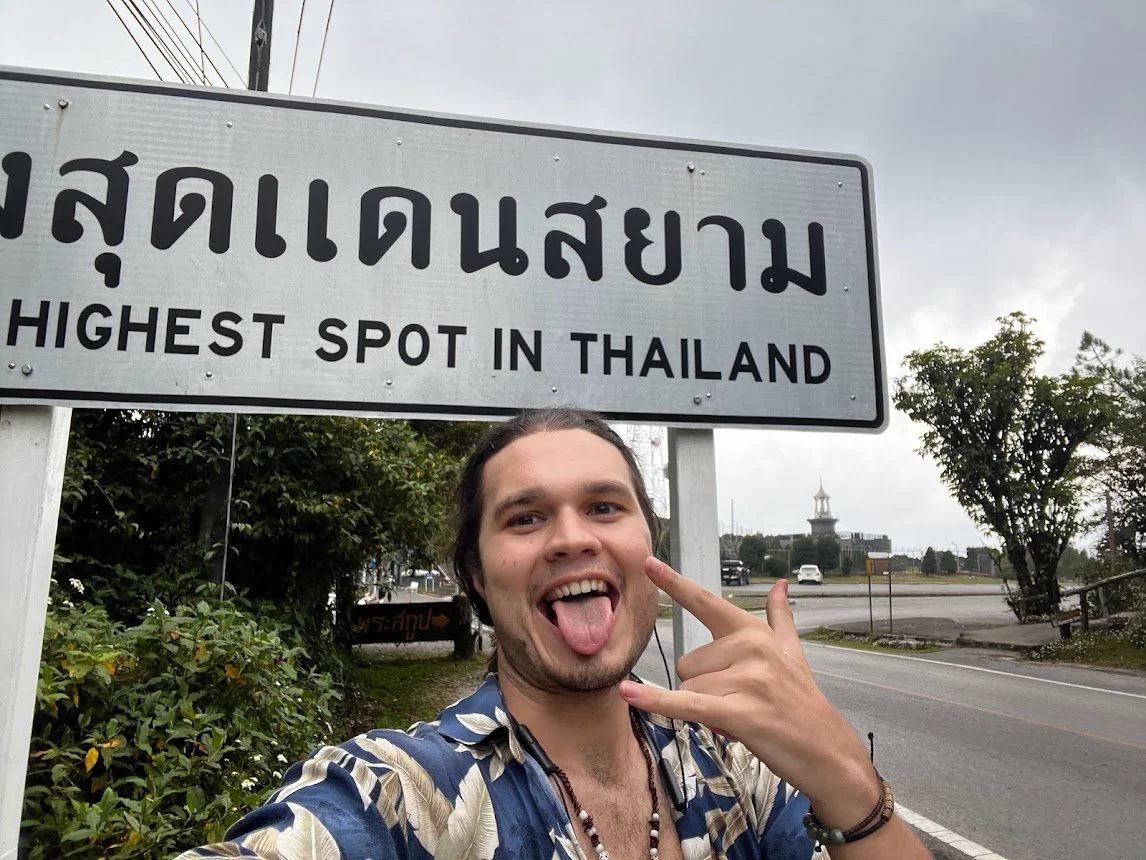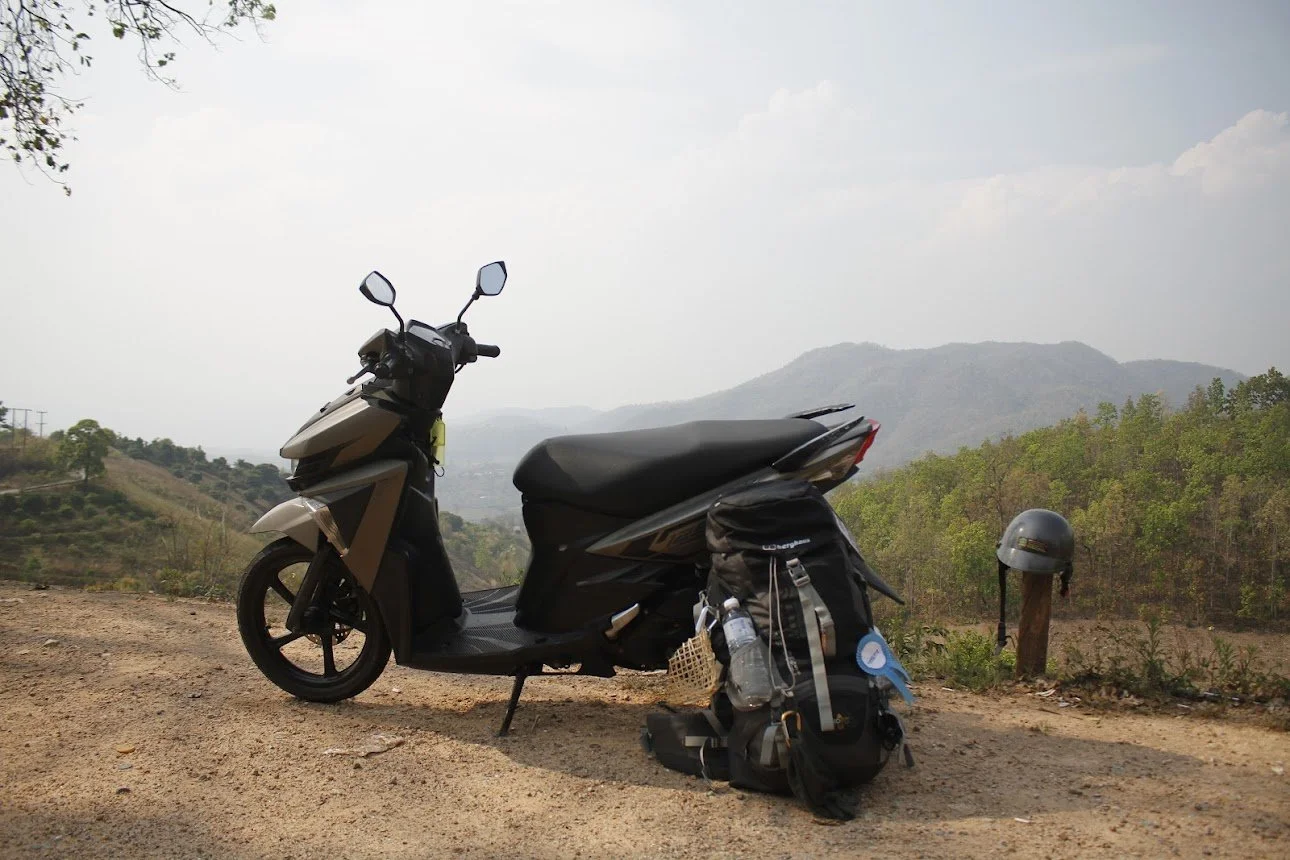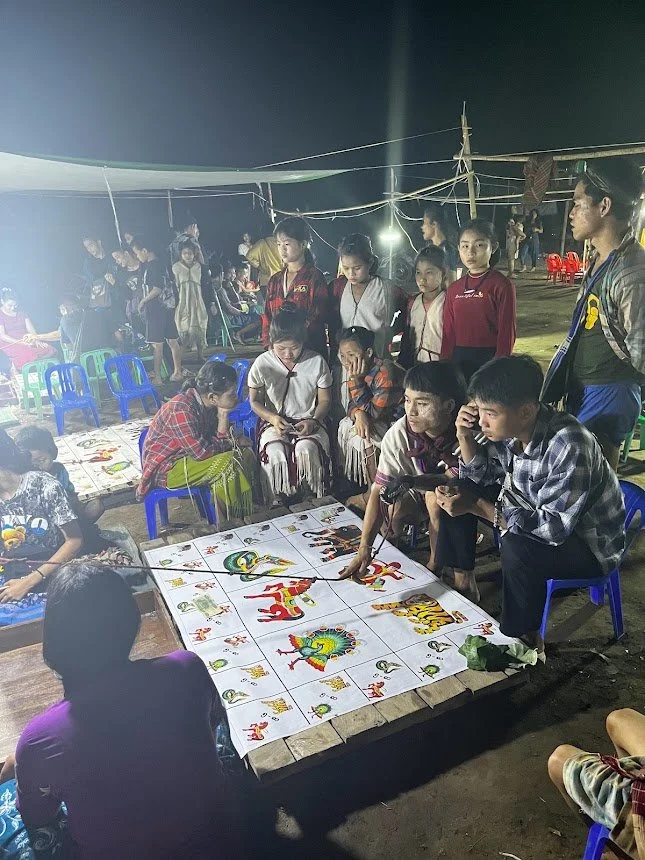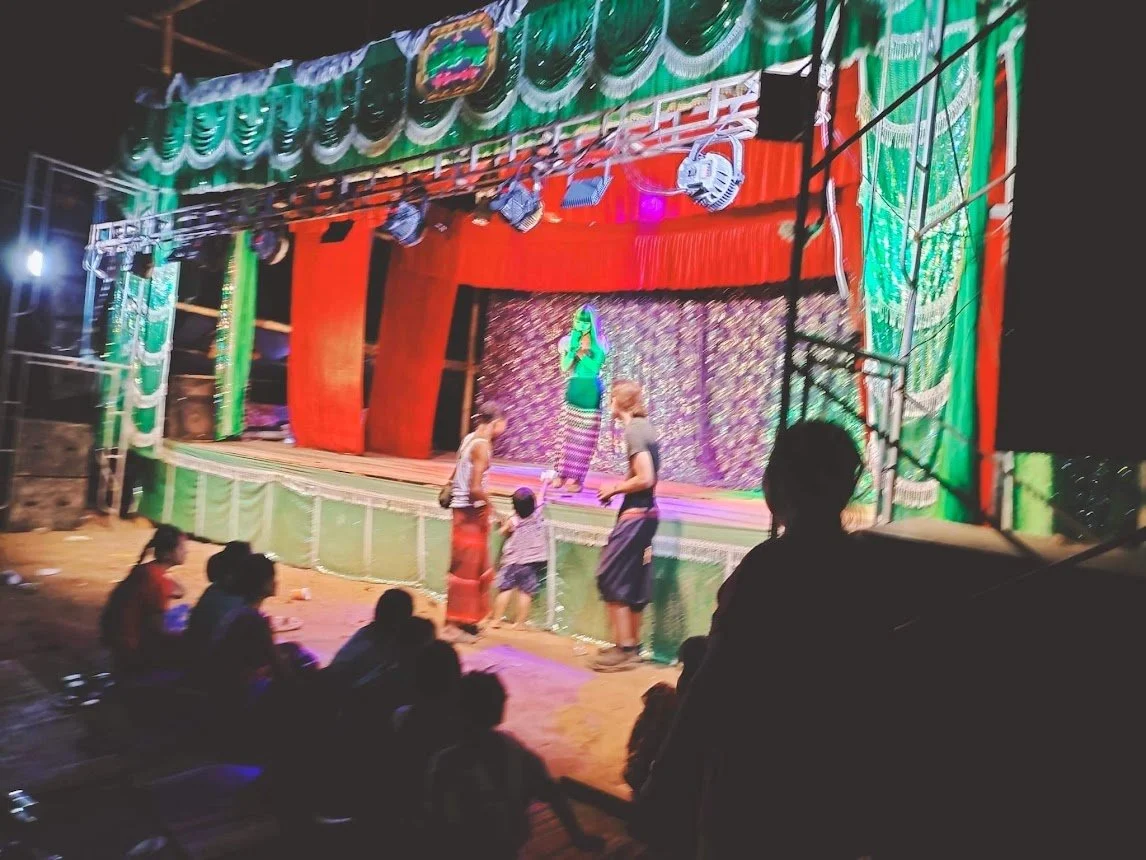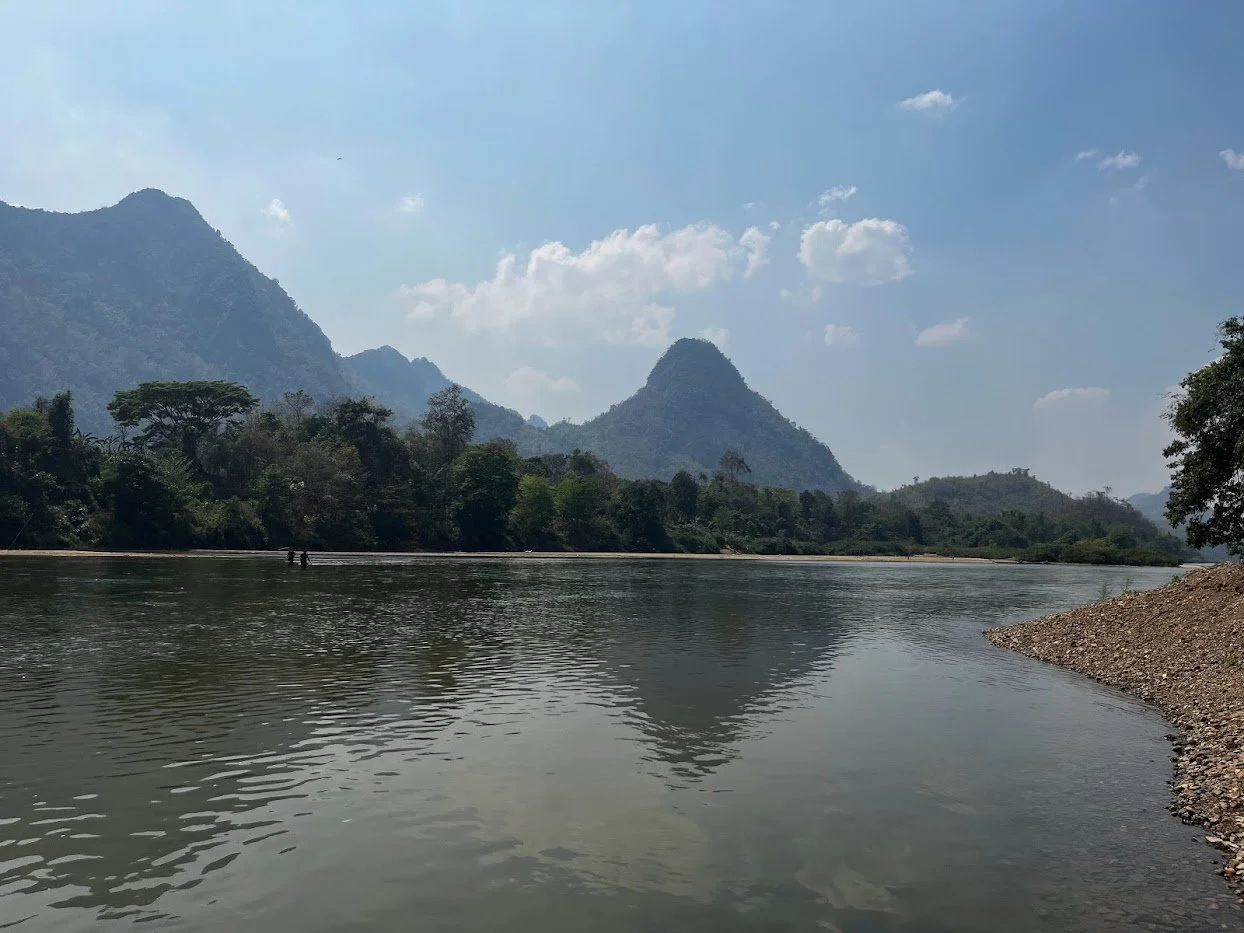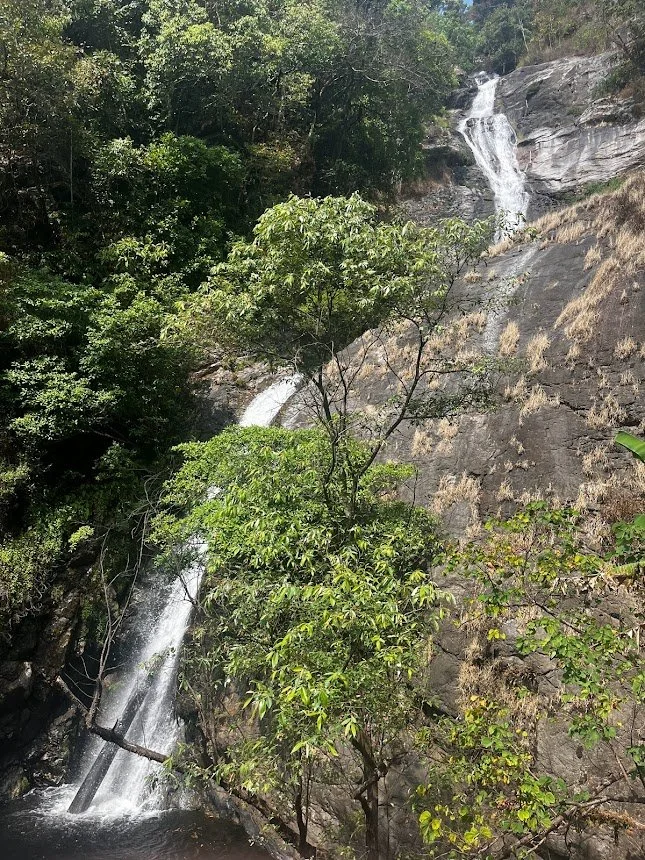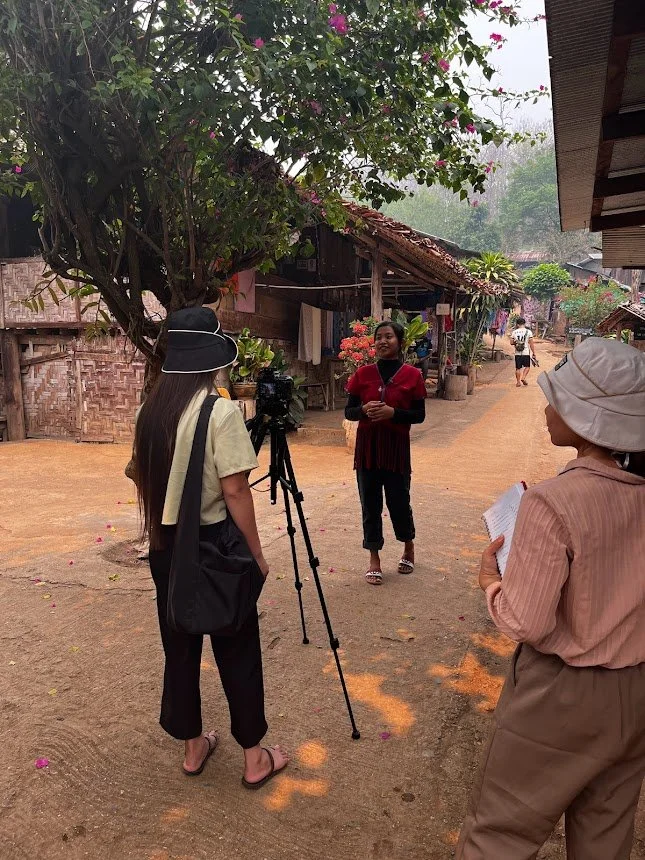Motorbike Trip
The Plan
The Mae Hong Son Loop is a 600-ish km loop around the mountains of northern Thailand that starts and ends in Chiang Mai. I decided to do it, with this as my route plan. It usually takes people around 5 days to complete.
I drove around 1,500 km in a route that looked something like this and it took me 18 days to complete. In that time I:
stayed at a monastery and meditated with monks
met a lovely family and attended their grandfather’s funeral
paid some dude with a boat $12 to smuggle me into Burma for a party
made it to the highest point in Thailand and explored the largest cave in the country
drove through hundreds of miles of stunning mountains
A lot happened and I have many stories to tell. To prevent one long rambling post, I’m going to split this post into three sections:
Monks and Explosions
Images and Incineration
Microwaves and Machine Guns
Suggested soundtrack to this blog post: Nathan’s Motorbike Playlist
But First: A Note About Etymology
This is a cool motorbike (ridden by a local in Pai):
These are cool motorbikes (found above a urinal in a bar bathroom):
This is my motorbike:
It is noticeably less cool.
You may even be tempted to call it a scooter. But it is not a scooter; I have a ticket for riding a motorbike without an international license and two more for improperly parking a motorbike. All tickets refer to a motorbike and not a scooter. And because biking is cooler than scootering I will use the terminology ‘motorbiking’ in this post and for the rest of my life when referring to this trip.
Starting the Mae Hong Son Loop:
Monks and Explosions
Day 1: I aimed for Pai and started driving. About an hour in, I needed gas and found a gas pump that was in a kiosk at the side of the road. Everything was in Thai and there were two pumps, a blue one and a yellow one. They looked the same to me and google translate didn’t help much so I randomly chose the blue pump and fiddled around until it took my money and gave me gas.
I must have been obviously struggling because a girl about my age stopped to help me. I was struggling but had just managed to fill the tank and felt pretty proud of myself. But she let me know I filled it not with gas but with diesel fuel. It turns out the blue pump was for diesel and the yellow for actual gasoline. Oops.
The shop that helped fix my bike.
I never started the engine, so no real damage and the girl was able to find a nearby repair shop that I pushed the bike to. There, a mechanic siphoned out the diesel and we refilled it with actual gasoline. The cost of the diesel fuel and subsequent repairs was about $3 so no big loss.
While the mechanic was working, the girl and I became friends. Her English was a bit rough, but far better than my Thai. Her name was Aum and she lived nearby. Shortly thereafter I was invited to her place for dinner. I accepted, of course, and when I arrived at Aum’s house, I found it prepared for a big event, there were hundreds of plastic chairs, temporary tents and a large ornate structure.
I had arrived on the day of her great-grandfather’s funeral.
Or at least a day of the funeral. It was a multi-day event and this was the last evening of the ceremonies. After dinner, I was further invited to stay the night and attend the ceremony. I accepted and the ceremony that night was a slightly somber affair with the 200 or so attendees dressed mostly in black. There was a service and monks chanted a bit, but it was all in Thai so I did not understand much.
Scenes from the evening: monk platforms, the large structure holding the casket, dinner
When all the guests left it was just the ‘core family’ of around 20 people I got to know pretty well who lived nearby or were also sleeping over and were closely related to the deceased. It is hard to overstate how welcoming this group was. Despite a significant language barrier, I felt incredibly welcome in their home and formed strong bonds with many of the people there in a short time.
That evening we definitely did not spend playing Pok Deng, a card game with a name that sounded like “pock-beck” and with rules similar to blackjack. I say we did not because gambling is illegal in Thailand, to the point where owning more than 120 playing cards is illegal (importing playing cards is also illegal, so I guess the deck of cards I carry in my backpack has contributed to the list of international laws I have broken).
The next day the funeral continued and all attendees from the night before returned again. Two ropes were attached to the display around the casket and it was then dragged by everyone to a nearby tomb.
Click to enlarge images
Pulling the casket to the tomb. As the adults were pulling the strings, fake flowers with small amounts of money were thrown like rose petals at a wedding and the children rushed to scoop them up.
Upon arrival at the tomb, there was another ceremony, with gifts to the monks, and the giving of a paper flower to members of the family and final death certifications from several government organizations were handed over. Finally, the casket was cracked open and then a coconut was cracked and poured over the deceased.
I received permission to photograph the events of the day and shared the photos with the family. This is one of the few times I have used my big DSLR rather than my phone to capture images.
Then the casket was loaded into a crematorium and the structure around the casket — led lights and all — was doused in fuel.
I sat off to the side with my camera, trying to stay out of the way, and capture some pictures. As I stood waiting for something to happen, a rocket whizzed past my ear and pinwheeled around a few trees guided by a wire. It then lit some firecrackers on fire, which lit some more fireworks on fire, that lit some spinning pinwheels on fire and set off some smoke bombs. This also led to the cremation chamber’s fire starting and the structure was set alight as well. It was a Rube-Goldberg machine of fireworks.
And then it was over. The fire died down and everyone went home.
After some heartfelt goodbyes, I also parted ways, continuing to Pai.
Pai is a hippie town full of drunk British teenagers and dudes with long hair doing drugs and drum circles. The whole place felt a little like a frat party mixed with Disney Land for thrill-seeking 20-somethings. An older bartender said the composition of tourists changes pretty regularly, but the whole town is set up for drinking, smoking weed, and motorbiking to nearby waterfalls so I can’t imagine anyone going there with a different plan.
I stayed a few days but was getting very low on my daily contact lenses. I had ordered some to my hotel in Chiang Mai to grab them after the biking trip but they were being delivered sooner than expected and what was supposed to take 1 day took 4, so I decided to run back to Chiang Mai and grab my contacts.
Dancing at the Temple
Bobbee, one of the close family members to the deceased in the funeral I attended and someone who definitely didn’t play cards with me all night, invited me to a 'merit-making ceremony’ at his local temple. I was told the ceremony was a big party, so I did not need much convincing to stop and spend a night there on my way back to Chiang Mai.
The party was not at all what I expected. The whole town showed up to a big lawn right outside the temple and got hammered. So many beers were consumed. And I do mean the whole town, there were around 400 people there.
There was also a stage set up with live music and an elevated dancing area. The dancing area had a number of girls in skimpy dresses, and you could shove 20 Bhat (under 1 USD) into their cleavage for a handsy dance with them. The catch was that it was on the elevated stage. In front of the entire community.
It was an incredibly odd setup but an incredibly fun party. The music was good and you can’t go too wrong with seemingly unlimited beer.
What the party was celebrating I have no idea - I think it might have something to do with a new roof being installed at the temple? And how getting hammered and dancing with strippers is making merits I am also unsure. Perhaps the cleavage-money was split 50/50 with the temple?
An interesting note is that there were on-duty police officers attending to keep an eye on things. But they were also drinking nearly as much as everyone else and occasionally danced with the girls on stage.
Chasing Contacts
I spent the night at Bobbee’s rather than the hotel in Chiang Mai where I originally planned. When I arrived at the hotel they said didn’t have my name as a guest so sent the package back yesterday, but it might still be at the post office. For the next three hours, I ping-ponged around three regional post offices to finally find the one that had attempted to deliver the contacts to the hotel.
This whole process was made infinitely more difficult by the fact that the package had no tracking number. It also meant that if I wasn’t able to locate the contacts in Chiang Mai then I wouldn’t be able to stop them in Bangkok or anywhere else. They would go all the way back to the USA and then have to be sent all the way back here again. I only had 3 days of contacts left and my only glasses were heavily tinted and not at all my style, so this was somewhat high stakes.
This is not what I wanted to look like for the next month.
After arriving at the correct post office I was initially sent away, and when I asked someone else I was sent to the 2nd floor, then to the third floor, and finally to the person who sorted my contacts after they got sent back. He pointed to an empty spot on the shelf and said they were right there not long ago. Realizing they no longer were right there, he ran to an already packed-up bag sitting near the elevator and pulled out my contacts. I just made it. But now I can see for the next 3 months.
Meditation
Later in my journey, I found a Buddhist monastery that was accepting farangs and decided to visit it. Lodging and food were free but there was a minimum two-night stay so you spent a full day with the monks and didn’t just treat it as a free hotel.
Monastery views
It turns out Bhuddism is more than dancing and fireworks. In fact, dancing was expressly prohibited at the monastery and I think fireworks would have been frowned upon as well. Instead, meditation was the in thing.
Everyone woke up at 5 am (or at least was supposed to) and we started the day meditating. Then came breakfast at 7 am, more meditation and more breakfast at 11 am. This was the last of the food for the day but it was not the last of the meditating. We had walking meditation, sitting meditation, more walking meditation, more sitting meditation, laying meditation, sitting meditation, some chanting and finally some more sitting meditation.
A video of walking meditation. This is in the morning and everyone is cold, otherwise only white would be worn.
Food was limited but coffee was available all day. Due to the whole waking up at 5 am thing and the fact that I needed something to fill my stomach, I consumed a lot of coffee while at the monastery. This did not help with the sitting stone-still for long periods.
I think I derive the same relaxation and ‘centring’ that many people get from meditation when I stare at an insect for hours or ride a motorbike with no music. Sitting still for hours in a mildly uncomfortable position with closed eyes is not the way for me to reduce negative emotions.
Cool bugs I found and stared at for a while to achieve enlightenment.
Despite learning the monk life isn’t for me, I had a super interesting experience. Talking to the other travellers who also ended up living in the monastery was the best part.
Well, talking to the ones that didn’t take a vow of silence.
Images and Incineration
I drove through hundreds of miles of gorgeous scenery. Below are some pictures of the scenery (also some pictures of me).
You may notice that some of the pictures are a bit hazy.
This is because all of northern Thailand is on fire.
March and April are known as ‘Burning Season’. The fires are semi-controlled burns lit intentionally to clear the agricultural waste and remove the dead bottom layer of brush in the forest (to make it easier to find mushrooms). The fires are slow-moving and low to the ground, but quite widespread. Whole mountainsides will be ash or have a line of fire creeping across them. For nearly the whole strip from Mae Sariang to Pai patches of fire were visible every minute or two of driving and the smoke was very thick.
Diving through this fire and smoke felt like this scene in Good Omens or the general vibes of Ghost Rider
Bobbee with hail
It is also the hottest time of the year and the dry season so lots of trees are shedding leaves and lots of brush is primed to burn. I have driven through over 100-degree (F) weather. Notably, though, there was a freak storm and it hailed on a large area of Northern Thailand, including me! This trip I’ve seen fire and ice.
Microwaves and Machine Guns
I took several mostly-intentional detours, side trips and excursions. The largest of which was down towards Mae Sot. I was told by another biker at a hostel that this stretch of road was the prettiest he had driven on in Thailand. I was interested in seeing Burma as well, and the road was right along the river that was the Thailand/Burma border.
I will say the stretch of road I was recommended was very pretty! Alone it may not have been worth the additional 400 km that it added to the journey, but I ended up with more adventures on this detour.
I stayed the night in Ban Tha Song Yang, a small village on Thailand/Burma border. There my innkeeper apologized because there was a party happening across the river that night and it was going to be loud enough that I would be able to hear it in my room.
I asked more about the party and was told there would be dances and singing performances. The river was not that large and I could see the stage from where we were standing so I asked if I would be able to see the performances.
She said yes, she could find someone with a boat to take me. This is not exactly what I meant, but I do like parties so wasn’t against the idea entirely. I asked about needing a passport or visa and the answer was:
“No passport, no visa. You just pay boat driver.”
I asked about safety and was told it was safe if I went for a short time.
Editorial Note: Following a coup in 2021 there is a civil war happening in Burma right now. Also possibly a genocide or two. The US government travel advisory says this about Burma:
Level 4: Do Not Travel
Do not travel to Burma due to civil unrest and armed conflict. Reconsider travel to Burma due to limited and/or inadequate healthcare resources. Exercise increased caution due to wrongful detentions and areas with land mines and unexploded ordnance.
I decided to go to the party.
Editorial Note #2: Myanmar vs Burma
Myanmar and Burma are both names for the same country. Prior to this trip, I referred to the country as Myanmar because that’s what I believed was most respectful; the country officially changed its name in 1989 from Burma to Myanmar.
But what I picked up from my brief visit is that a tyrannical government (the same regime that led the 2021 coup and is currently in charge) renamed the country Myanmar and many still people use Burma as a form of protest.
Everyone I met in Burma used the term Burma. As do the US state department and the prior president of Burma (democratically elected and overthrown in the 2021 coup). I generally do not support tyrannical governments and so also will be using the country name Burma, except when referring to the current regime, where I will use the official name of Myanmar.
After agreeing to this trip we waited for it to get dark and found a man with a boat. He and his wife would both come across the river and I convinced the innkeeper to come as well, so I wasn’t left alone with strangers whose language I couldn’t speak while sneaking into a war-torn country.
We grabbed flashlights and went down a small windy footpath then loaded into a boat and went across the road.
The party was interesting. There was lots of gambling and after a couple of hours the performances started.
Sic Bo, a game with three dice. Each die has an animal on it. Money is placed on the board animals and the string is pulled to release the die. If the animal you put money on was shown your money is doubled. If it is rolled twice, your money is tripled. If not at all you lose your money.
You could also bet on the smaller squares. These required both animals to be shown but had a larger payout. There was another version with numbered dice but the animal one was more popular.
There were many Thai people here, so I guess it is more illegal to gamble in Thailand than it is to cross the border to Burma and gamble there.
Notice there is a substance many people are wearing on their faces - this is not mud its Thanaka. It was worn by people of the Karen ethnicity, from Burma and displaced by the Myanmar government.
There were performances in 4 languages: Thai, Burmese, and two indigenous mountain languages. None of the videos I took are any good, but I was mildly concerned for my life the entire time I was filming and that kind of adrenaline is not conducive to good videography.
A group that wanted to take a picture with me. PumPoi, my innkeeper, is holding flowers. I attracted a decent amount of attention and eventually formed a little group of friends. We ended up going back across the river to Thailand with two extra people in our boat.
I attempted to keep a low profile but after a few beers and betel nuts, I got dragged into dancing. It was a party after all.
Notice the group of 4 people directly behind me. They are all heavily armed. I first caught sight of them as they walked directly past me and I turned my back trying to hide my face, thinking this was the end. I was the only white person I had seen in two days of travel and obviously did not belong in Burma. I figured they were part of the military that was executing civilians and wrongfully detaining foreigners. In the USA crossing the border illegally is solid grounds for detainment and can lead to death.
But they didn’t seem to mind me at all and walked right past me. Later, someone from my ragtag group of friends went and talked to them, motioning me to follow. I’m not sure what was said but the experience of standing next to the soldiers was mortally terrifying.
Looking back I’m not sure the soldiers were part of the Myanmar military, they may have been resistance fighters. The area I was in is one of the more contested regions and I’m not sure it’s under the control of the Myanmar military right now. Either way, I’m glad to not be shot or detained.
After about 4 hours in Burma, we took the boat back across to Thailand and I paid the driver 300 Bhat or about $12.
Scenes from the evening, including me tipping a singer in drag.
The side of the river I was on was Thailand. Directly across was Burma. Notice the two people walking across.
While driving along the river border I saw many fishermen, children, and people collecting plants walking across the river border between Burma and Thailand.
It was the hottest stretch on my trip and I decided to stop and go for a swim. I ended up swimming all the way across the river and standing in Burma. This time I only stayed for about 30 seconds, but the border is much more porous than I expected.
The Microwave Part of the Machine Guns and Microwaves Section:
Other detours from my path were found these by following blue signs on the main road.
The problem with these signs is that they do not give a ‘distance’, specific directions, or any idea of what you will get. More than once, I turned off and drove 40+ minutes on an incredibly rough road with no other person or any waterfall in sight and was forced to turn around. Other times I would walk down a trail that the blue sign pointed at only to find that it disappeared in the middle of the jungle leaving me without a cave and without a clear way back to the road.
But I also found many beautiful waterfalls, many of which I never planned on visiting until I saw the guiding sign.
Caves and hot springs were visited as well (including the largest cave in Thailand which required a boat to navigate fully).
Once I took a 90-minute trip along a rough road to some radio towers: the BAN MEO MICROWAVE. I followed the blue signs and assumed it was a tourist attraction but, upon arrival, there was no one around to give a tour and nothing interesting except for some radio towers on the top of a mountain.
I decided to make my own adventure and climb the unguarded towers for a better view of the area. I made it to the first platform (about halfway up) and remembered I was terrified of heights so went no further, but the views were good!
Brass Rings
One of the unique attractions was advertised as a ‘Karen Longneck Village’ (also sometimes a ‘Kayan Longneck Village’, or ‘Longneck Tribe’). This was billed as a small village of Karen people who still practised the traditional body modification of lengthening their necks with brass rings.
Editors Note: I’m pretty sure there’s a difference between the Karan and Kayan ethnic groups but I’m an entomologist not an anthropologist. I will use Karen when describing the villagers, but I’m unsure if this is the most accurate description.
What I found when I arrived was a mix between a traditional village and a tourist attraction. I was immediately charged 200 Bhat for entry to the village, and the town was laid out like a theme park, with a little map giving you directions. Each house had a small booth outside it selling merchandise; keychains of figures with rings around their necks, wooden states with rings around their necks, copper rings, bracelets, and other trinkets.
Trinkets whose sales supported the local economy.
Many of the women did wear rings around their necks. The rings permanently deform the skeleton. They squish the shoulders into the ribcage and compact everything down, making the neck longer, without adding any height. The rings are fairly thick brass and so are quite heavy.
Women wearing rings. It becomes very obvious when the rings are taken off that there is permanent alteration to their skeletal structure.
In the past, this was a traditional beauty practice, but currently, in this village, it seemed to be used exclusively for tourism. Most of the residents had never been to Burma but rather were born and raised in this village. The previous Karen people I had met near Burma wore Thanaka and not rings; here little Thanaka was worn and many rings were. The village seemed to be a generation or two away from the life it was imitating.
The village was supported nearly entirely by tourism. The 200 Bhat admission fee and the purchasing of souvenirs. I am unsure how I felt about paying money to see people who permanently deformed their skeletons to draw in tourists like myself.
A Kantrawaddy Times reporter
As I’m wrestling with this ethical dilemma, a news organization, the Kantarawaddy Times, approached me for an interview and asked what I thought about being there. Trying to avoid being the next face of problematic tourism I said something along the lines of
“I enjoy seeing new things and this is very new for me, but I hope I’m not contributing to any exploitation.”
I should say that village life did seem comfortable and everyone I asked said they liked living there. It did not feel like direct exploitation.
Making textiles on the loom was something nearly all the women in the village did. The textiles were sold next to other souvenirs for about 50 Bhat (under 2 USD) per day of work, meaning that fairly large and intricate textiles were being sold for quite cheap. Having to shove everything I own in a backpack I had to resist the urge to buy lots of these, but I did get a headband and a scarf.
Modelling my headband and scarf. The rules of fashion in Thailand are different than in the States. The nose cover is an attempt to block the smoke and sun while motorbiking.
Insects including cicadas and weaver ants were also collected and eaten in the village! The ants themselves were not eaten, but the larvae and pupae were. Weaver ants nest in trees and aggressively bite and spray acid when provoked, so I’m unsure how these were collected.
The cicadas were laying out to dry in the sun. Later the wings get picked off and after that, I’m not sure how they are prepared.
I had an omelet in Chiang Mai with the ant larvae in it and tried the cicadas raw. I think they’re mostly for texture and protein as the flavor is not strong.
Finishing the Loop
That concludes the stories from the bike trip. Many more things happened but if I try to write it all out this is going to turn into a book and not a blog.
I sit now in Chiang Rai, and tomorrow I will enter Laos. I have spent close to a month in Thailand and quite enjoyed it. But now I’m onto a new place and new adventure. Soon I will board a boat for a 2-day trip to Luang Prabang. From there my plans get blurry, but we are approaching a large holiday: the Water Festival/New Year/Maha Thingyan and I’m very much looking forward to that.

